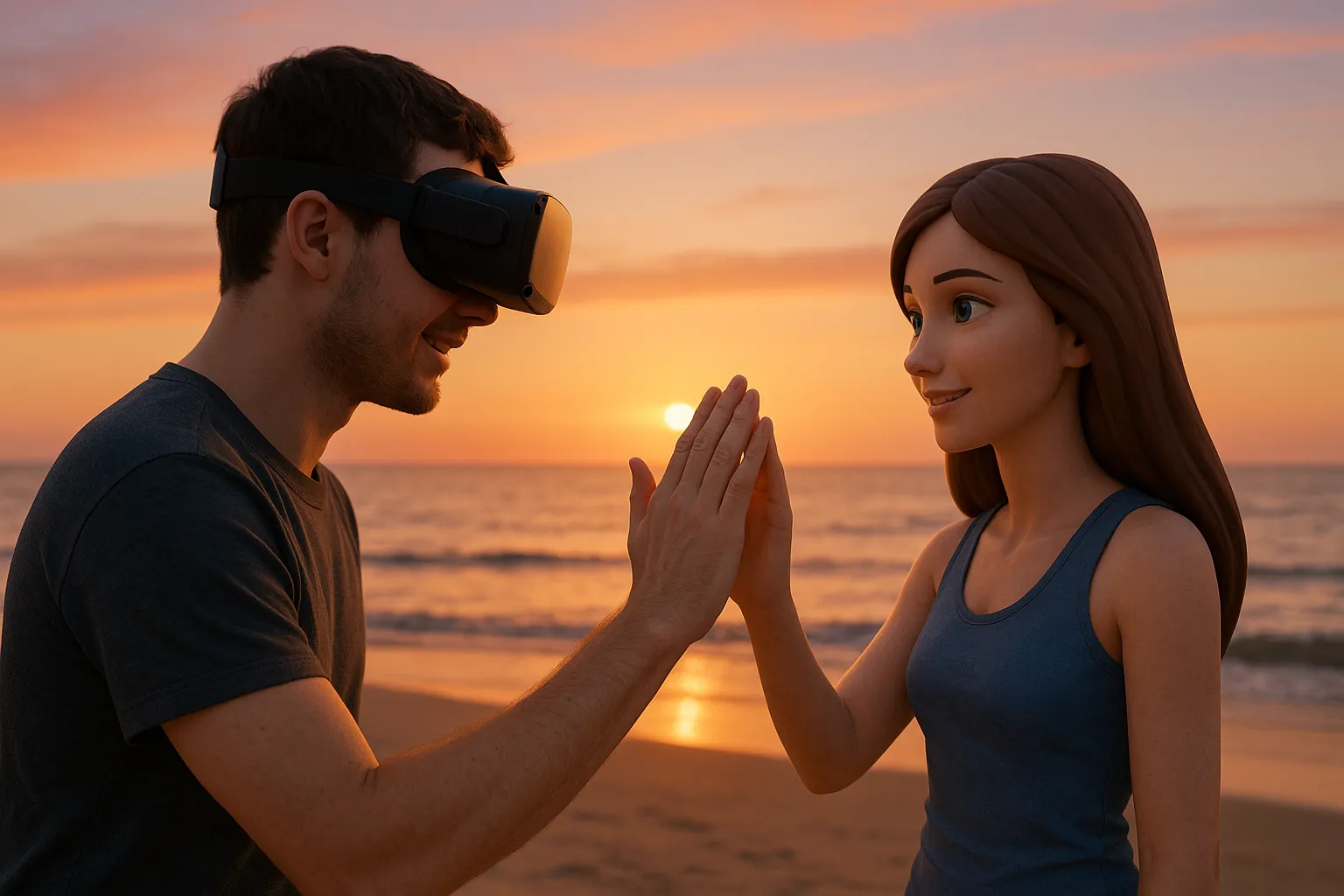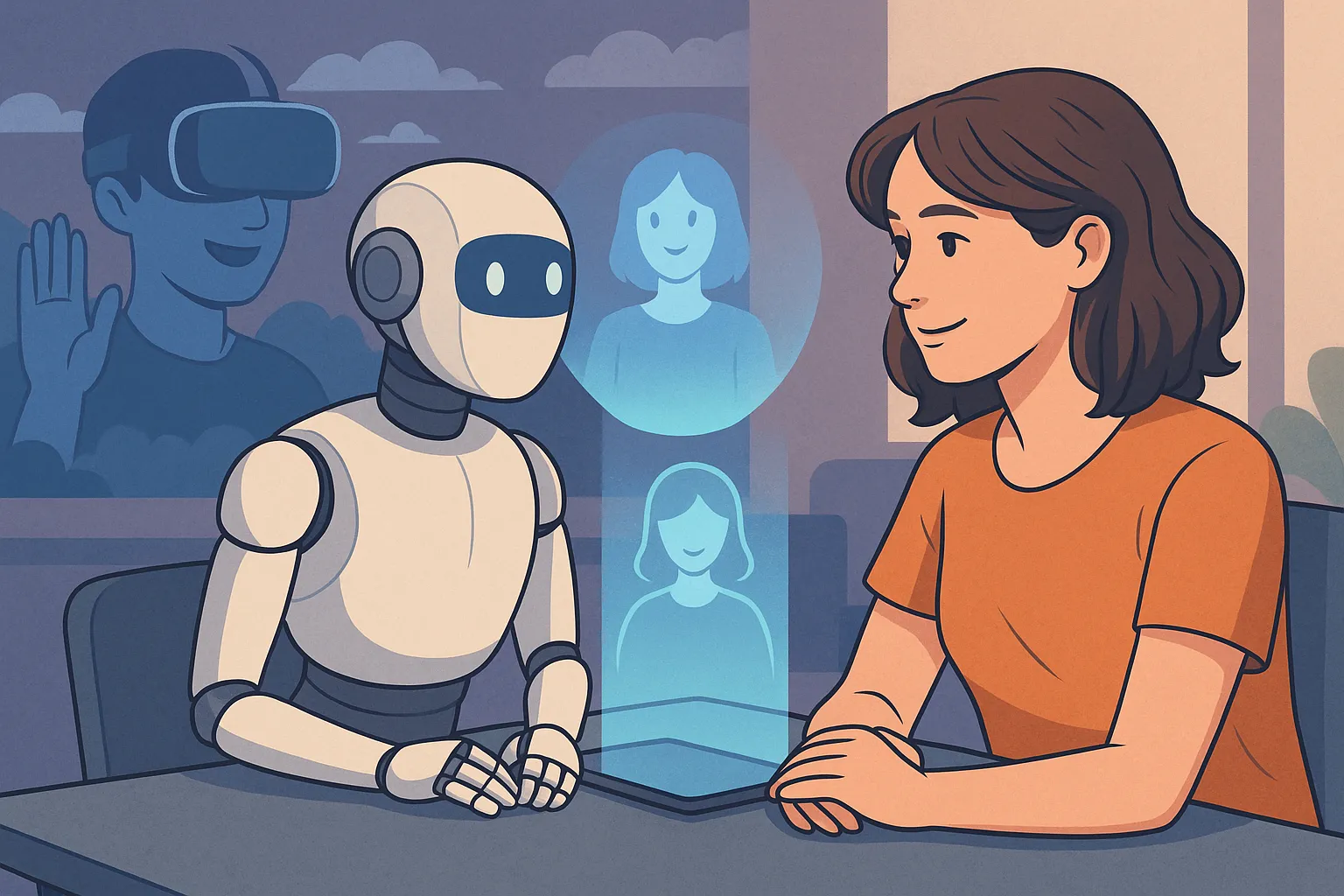The Evolution of Human Connection in the Digital Era
Human relationships have always been shaped by the tools and environments available at a given moment in history. From handwritten letters to telephones, from online chatrooms to video calls, every technological leap has brought new ways of connecting across distance. Virtual reality (VR) represents the next frontier, offering a level of immersion that makes digital interaction feel profoundly real. Instead of merely exchanging words or images, people can now share experiences in three-dimensional environments that simulate presence and intimacy.
This shift has opened the door to relationships that would have been unimaginable just a decade ago. In VR spaces, individuals are not limited by geography, appearance, or even physical identity. They can construct avatars that reflect how they see themselves — or how they wish to be seen. As a result, relationships formed in these environments often carry a unique intensity, blending imagination with emotional authenticity.
Why Virtual Experiences Trigger Real Emotions
One of the most striking features of VR relationships is the depth of emotional connection users report. The human brain responds strongly to sensory cues, and VR provides visual, auditory, and spatial input that tricks the mind into believing the experience is real. When two people interact in a shared digital environment, their bodies and senses respond in ways similar to face-to-face encounters.
For example, walking together on a virtual beach, looking into an avatar’s eyes, or sharing a conversation under a simulated sunset can generate genuine feelings of closeness. These sensory experiences are processed in the brain as if they were happening in reality, triggering the release of hormones like oxytocin and dopamine, which are associated with bonding and pleasure. In this way, digital love in VR feels authentic because the emotional and physiological reactions are real, even if the setting is virtual.
Escaping Physical Limitations
Another reason VR relationships resonate so deeply is the freedom they offer from physical limitations. In the physical world, relationships can be constrained by distance, disabilities, or societal barriers. Virtual spaces, however, allow individuals to transcend these obstacles. Someone confined to their home can dance, travel, or explore with a partner in VR. Two people separated by thousands of miles can still meet face-to-face in a digital environment, bridging the emotional gap that physical distance creates.
This liberation from physical constraints fosters a sense of equality and possibility. People who may struggle with shyness, social anxiety, or physical insecurities often find it easier to express themselves in VR. The ability to present oneself through an avatar also allows for exploration of identity, which can make relationships more open, playful, and accepting than in the physical world.
The Psychology of Presence
Presence — the feeling of “being there” — is at the heart of why VR relationships feel so compelling. Unlike traditional digital communication, where users are aware of the screen separating them, VR places individuals within a shared environment that feels lived-in. This psychological presence makes conversations and interactions more engaging, as if both parties occupy the same space.
Psychologists describe this as “embodied interaction.” When someone reaches out in VR, the brain interprets the gesture as real, even if no physical touch occurs. This phenomenon explains why hugs, handshakes, or even eye contact in VR can provoke genuine emotional responses. The illusion of presence is so powerful that it can override rational awareness, making the connection feel tangible and emotionally charged.
Building Intimacy Through Shared Experiences
In any relationship, shared experiences are the foundation of intimacy. VR amplifies this by allowing couples or friends to create memories in environments that may not be possible in real life. They can climb mountains, attend concerts, or visit exotic destinations without leaving their homes. These experiences feel meaningful because they are interactive and co-created.
The ability to design adventures together also strengthens emotional bonds. Instead of passively consuming content, VR users actively participate in shaping their shared story. This sense of collaboration fosters closeness and trust, qualities that make digital love feel authentic. Over time, these shared adventures form a history that mirrors the milestones of physical relationships.
Overcoming Loneliness in the Virtual World
Loneliness has become a defining challenge of modern life, and VR offers a compelling antidote. People who struggle to connect in traditional ways often find comfort and companionship in virtual spaces. VR relationships provide a sense of belonging and emotional support that can reduce feelings of isolation.
The immersive nature of VR makes these connections feel more substantial than text-based or video interactions. For many, logging into a VR world and meeting a partner or friend feels as natural as stepping into a physical gathering. The sense of community and the ability to maintain regular contact help combat the emptiness that often accompanies modern isolation.
Identity, Anonymity, and Self-Discovery
Virtual reality not only facilitates relationships but also encourages self-discovery. Users can experiment with how they present themselves, choosing avatars that reflect their ideal self or an entirely new persona. This anonymity can reduce social pressure, making it easier to open up emotionally.
Interestingly, many VR relationships thrive because of this freedom. When appearance and social status are stripped away, conversations become more genuine and focused on personality, values, and emotions. This can lead to deeper connections that may feel more authentic than relationships bound by physical appearances. At the same time, the ability to experiment with identity allows individuals to explore aspects of themselves they might suppress in real life, creating more honest and fulfilling interactions.
The Skepticism Around VR Love
Despite the growing acceptance of VR relationships, skepticism remains. Critics argue that digital love is an illusion, built on fantasy rather than reality. They question whether relationships can be truly authentic when mediated through avatars and artificial environments. Concerns also arise about the potential for deception, as individuals may misrepresent themselves in ways that distort trust.
Yet, for those who experience these relationships, the emotions are undeniably real. Even if the setting is artificial, the feelings of connection, care, and intimacy exist within the human mind and heart. This raises an important philosophical question: should the authenticity of a relationship be measured by its external form or by the emotions it creates?
The Potential for Future Developments
As VR technology evolves, so will the depth of these relationships. Advances in haptic feedback, AI integration, and sensory immersion will make interactions even more lifelike. Imagine being able to feel the warmth of a partner’s hand through haptic gloves, or having an AI-driven companion that remembers every shared moment and adapts to emotional needs.
These innovations will blur the line further between digital and physical love. Relationships that begin in VR may increasingly transition into hybrid models, where couples maintain both virtual and real-world bonds. The integration of artificial intelligence with VR companionship may also create entirely new relationship paradigms, reshaping how society defines love and intimacy.
The Emotional Risks of Virtual Intimacy
While virtual relationships can feel profoundly real, they also carry unique risks. One of the most significant challenges is the possibility of emotional overinvestment in a connection that may not translate outside the digital world. Because VR experiences are immersive and stimulate strong emotional reactions, individuals may develop attachments that feel deeper than intended. When the relationship ends or the other person withdraws, the sense of loss can be just as painful as in physical life.
This potential for heartbreak demonstrates that VR relationships, though built in artificial spaces, carry very real emotional consequences. It also highlights the importance of awareness and balance — recognizing that while VR love feels real, it still exists within a mediated context. Developing strategies to protect emotional well-being, such as open communication and realistic expectations, becomes essential for those navigating digital intimacy.
The Ethical Dimensions of Virtual Love
As VR relationships become more common, ethical questions arise about identity, honesty, and representation. Since avatars can be highly customizable, there is always the possibility of misrepresentation. Someone might present themselves as an entirely different gender, age, or persona, raising questions about authenticity and trust. While some see this as playful experimentation, others view it as deception that undermines the foundation of meaningful connection.
Beyond identity, there are also broader ethical considerations. How should society treat digital intimacy? Should VR partnerships be recognized as legitimate forms of relationships, or are they destined to remain in the shadows, dismissed as fantasy? These questions are especially relevant as people increasingly turn to VR companionship to meet emotional needs that the physical world may not fulfill.
The Blending of Physical and Virtual Relationships
Another fascinating aspect of VR relationships is how they often exist alongside physical-world connections. Many individuals involved in virtual intimacy may also have relationships offline, creating a hybrid model of companionship. This blending can enrich life by providing multiple layers of support and interaction, but it can also lead to conflict if expectations are not clear.
For example, someone may feel emotionally fulfilled by their VR partner but struggle with feelings of guilt or secrecy in their offline life. Conversely, others may openly incorporate VR companionship into their real-world relationships, seeing it as an extension rather than a replacement. This hybrid model reflects the increasingly fluid nature of intimacy in the digital era, where boundaries between physical and virtual are less rigid than ever before.
Cultural Shifts in Acceptance
As with any new form of relationship, VR intimacy faces cultural resistance. Traditional ideas about love and partnership emphasize physical presence, shared experiences in the material world, and social recognition. VR challenges these assumptions, asking society to redefine what counts as “real” love.
Over time, cultural perceptions are likely to evolve. Just as online dating transitioned from being stigmatized to mainstream, VR relationships may follow a similar trajectory. Already, communities within virtual platforms normalize and celebrate these bonds, providing support networks that validate their legitimacy. As younger generations grow up with VR technology, they may be more willing to accept digital love as simply another way to connect.
The Role of Technology in Amplifying Connection
Technological innovation will continue to shape the depth and realism of VR relationships. Advances in motion tracking, facial recognition, and haptic feedback will allow avatars to mirror human expression and movement with increasing accuracy. This realism will make interactions more emotionally convincing, bridging gaps that currently remind users of the artificial nature of the experience.
Additionally, the integration of artificial intelligence into VR platforms will expand possibilities. Imagine AI-powered companions that not only simulate personality but also evolve through shared experiences, creating continuity that resembles human growth. For many, these developments may provide companionship that feels more stable and emotionally responsive than human partners. The blending of AI with VR will push the boundaries of intimacy in ways society is only beginning to imagine.
Potential for Therapy and Healing
Beyond companionship, VR relationships hold significant promise in the fields of therapy and emotional healing. Psychologists are already experimenting with VR environments to help individuals overcome trauma, manage anxiety, and practice social skills. Adding the dimension of companionship could make these interventions even more powerful.
For people recovering from heartbreak, grief, or loneliness, VR partners can offer consistent support without judgment. They can provide a safe space to express emotions, practice trust, and rebuild self-esteem. This therapeutic potential suggests that VR companionship may not only create new relationships but also help heal wounds from past ones.
Addressing the Criticisms
Skeptics often argue that VR relationships are inherently inferior because they lack physicality. They claim that without touch, smell, and real-world interaction, intimacy is incomplete. While these critiques have merit, they overlook the subjective nature of love and companionship. For many, the essence of intimacy lies in emotional connection, trust, and shared experiences — all of which can exist within virtual environments.
Furthermore, critics sometimes underestimate the resilience of human adaptability. Just as long-distance couples find creative ways to sustain intimacy through calls and digital communication, VR couples innovate within their medium. While not identical to physical relationships, VR intimacy may simply represent a new category of connection rather than an inferior substitute.
Redefining the Concept of “Real”
Perhaps the most profound implication of VR relationships is their challenge to the concept of what is “real.” If love is defined by emotional impact, then the feelings experienced in VR are as real as those in physical life. The environments may be simulated, but the emotions are not. For those involved, the joy, comfort, and companionship are genuine, regardless of the medium through which they are experienced.
This redefinition forces society to broaden its understanding of love and intimacy. Instead of viewing VR relationships as artificial or secondary, they may come to be recognized as valid expressions of human connection in a technologically mediated world. In this sense, the rise of VR love reflects not just technological progress but also an expansion of the human imagination.
Looking Ahead: The Future of Digital Love
The future of VR relationships is filled with possibility. As technology becomes more advanced and more accessible, digital love may move from the margins to the mainstream. Couples may celebrate anniversaries in virtual spaces, families may maintain bonds across distances through VR gatherings, and entire communities may form around shared digital experiences.
At the same time, challenges will persist. Ethical guidelines, cultural adaptation, and personal boundaries will need to evolve alongside the technology. Ensuring that virtual relationships complement rather than replace human bonds will be critical to maintaining balance. Yet despite these challenges, the trajectory is clear: VR relationships are here to stay, and their influence on the way humans connect will only deepen.
Why Digital Love Feels Real
At the heart of the discussion lies the central truth: digital love feels real because the emotions it evokes are real. Virtual sunsets may be pixels, but the comfort of companionship, the thrill of intimacy, and the warmth of being understood are authentic human experiences. VR does not manufacture these emotions — it provides the environment in which they can flourish.
This realization underscores the transformative power of technology in shaping human connection. Far from being a distraction or a substitute, VR relationships highlight the creativity and resilience of the human spirit, showing that love adapts and thrives wherever it can take root. Whether in physical or virtual spaces, the desire for companionship remains universal, and the ways of fulfilling it will continue to evolve with each new technological leap.






